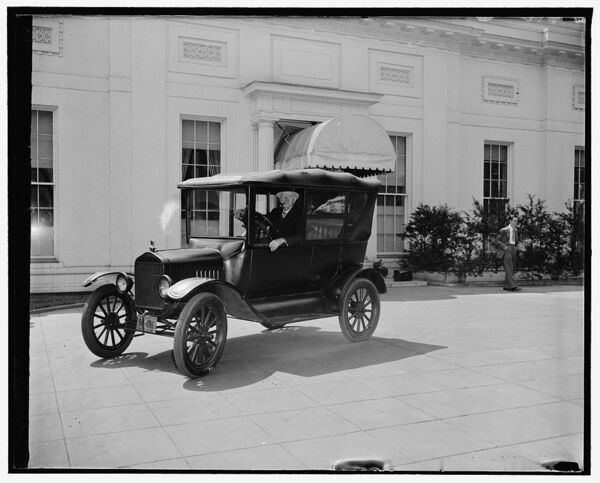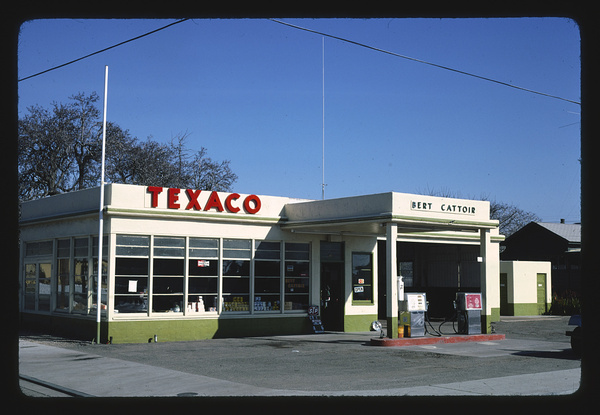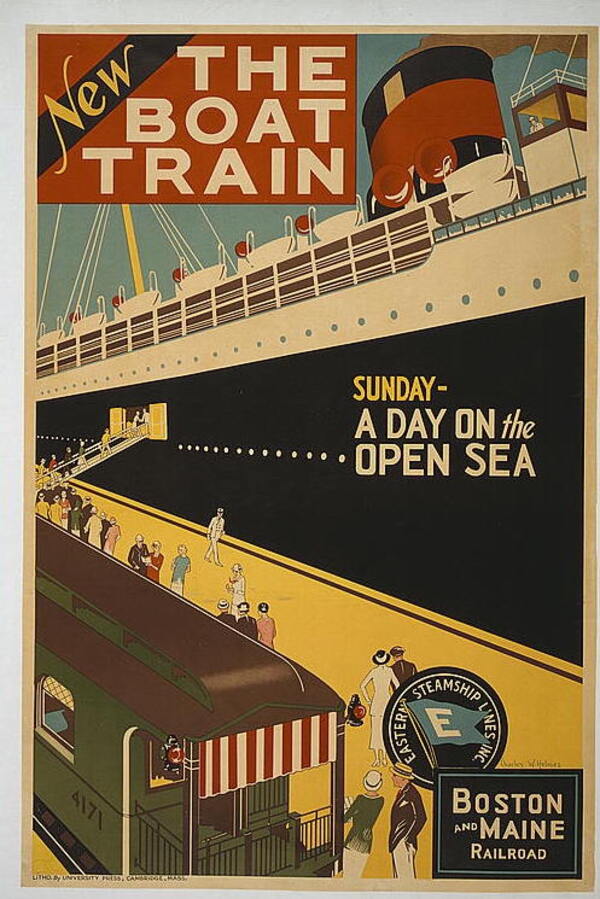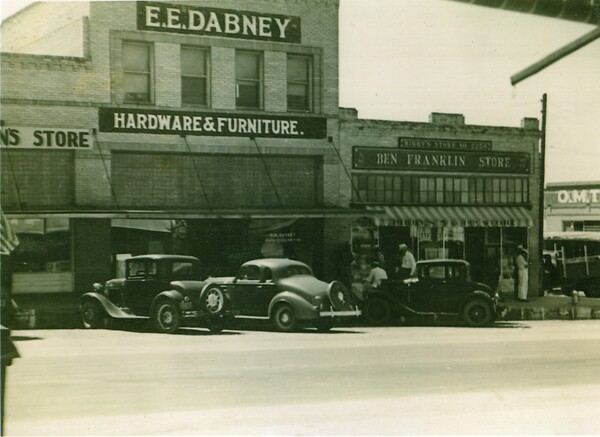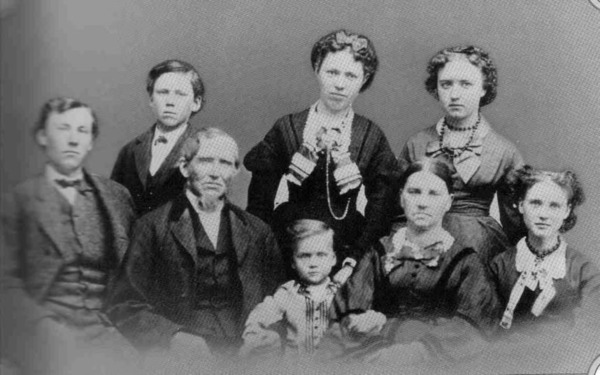In late 1916 and early 1917, the U.S. Military was in desperate need of help funding the war efforts. Over the next two years, they would hatch hundreds of ideas and campaigns that involved entertainers, movies, parades, etc. all in the name of helping to sell War Bonds. One of our favorite projects involved two relatively unknown photographers -- Arthur S. Mole and John D. Thomas -- who hatched the idea of crafting elaborate "living portraits" out of thousands of soldiers.

Human Statue of Liberty: 18,000 officers and men at Camp Dodge in Des Moines, Iowa.
This is by far their most famous photo. Taken in the middle of summer on a sweltering day in 1918, it involves 18,000 officers and men at Camp Dodge in Des Moines, Iowa. The photo took all day to set up and many men passed out from the hours of standing in their wool uniforms in nearly 100 degree heat.
The photo was taken from a specially-designed 80-foot tower, and you'll notice one amazing thing about the photo: It has almost perfect perspective! Here's where it gets interesting: If you look at the bottom of the photo, you'll see about 60 men make up the "base" of the statue. Beyond that, there are 2,000 men that make up the body, left arm, and head. Now get this: There are 12,000 men in the flame coming out of the torch!
Another interesting fact: The actual Statue of Liberty is only 151 feet tall? However, to ensure proper perspective, these soldiers had to create their statue at 1235 feet!
Let's look at a few more examples and dive deeper in to how they figured out how to do this...
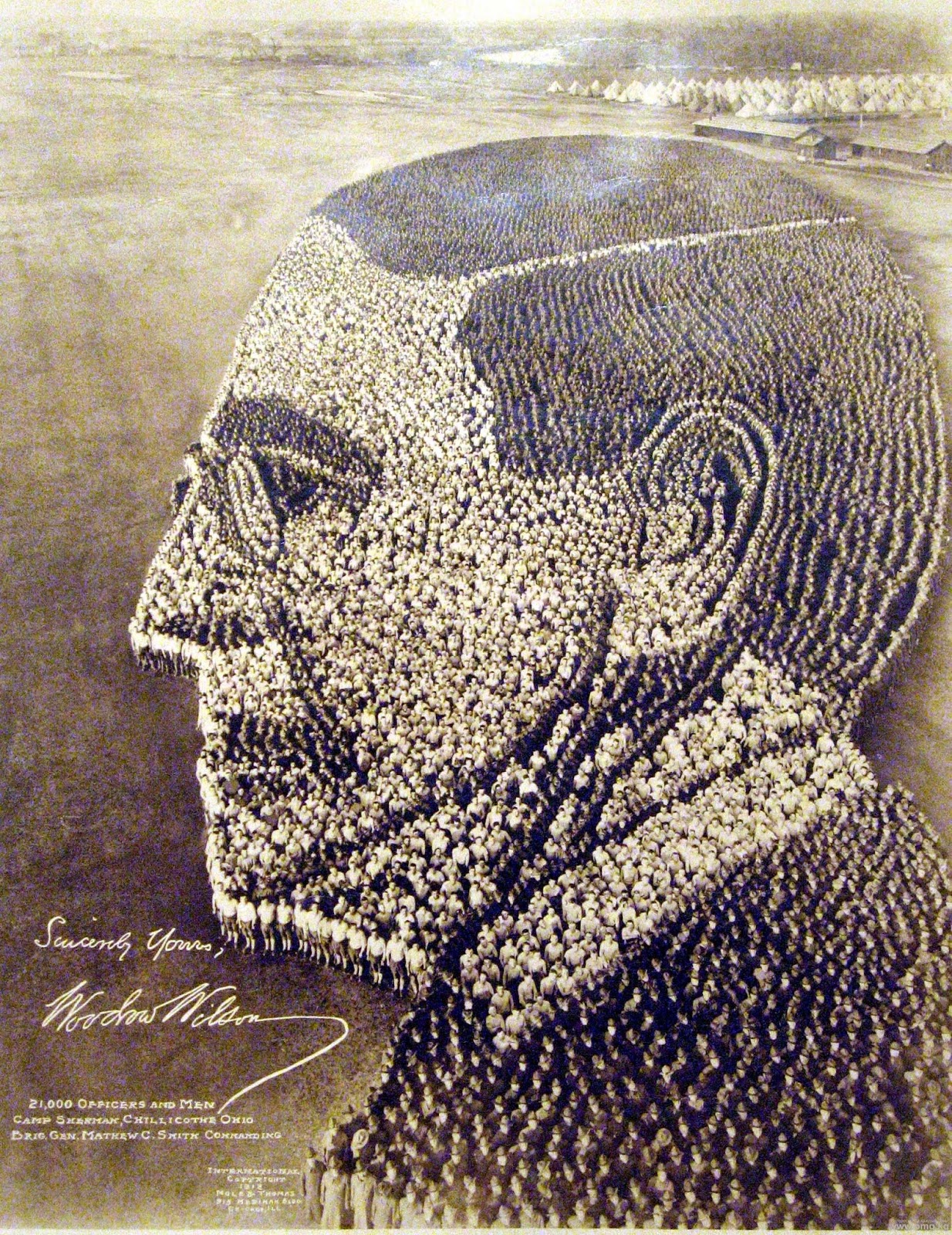
Human Portrait of Woodrow Wilson: 21,000 soldiers at Camp Sherman, Chillicothe, Ohio in 1918
This is another interesting one, namely because of the care they had to take in not just creating the likeness of President Wilson, but coordinating the various levels of whites, grays, and blacks to ensure proper shading and contours.
So how on earth did they figure out how many men to put where?! The entire genius behind these photos came when the photographer realized that by simply the perfect outline on the actual lens of his camera, he could then dispatch men to set up small flags to match the outline. From there, white tape was laid to give the initial outlines.
While this sounds simple enough, can you imagine standing on an 80-foot tall tower and asking a soldier 1000 feet away to "a little to the left...no now to the right...". This is why this is all so impressive. Let's look at a few more examples.

Human US Shield: 30,000 soldiers at Camp Custer, Battle Creek Michigan in 1918
This was their largest photo by number of people involved, but also one of the simplest in terms of configuration. According to historical accounts, the most difficult part was ensuring that not only were the stars all the exact same size, but that they maintained perfect lines and points.
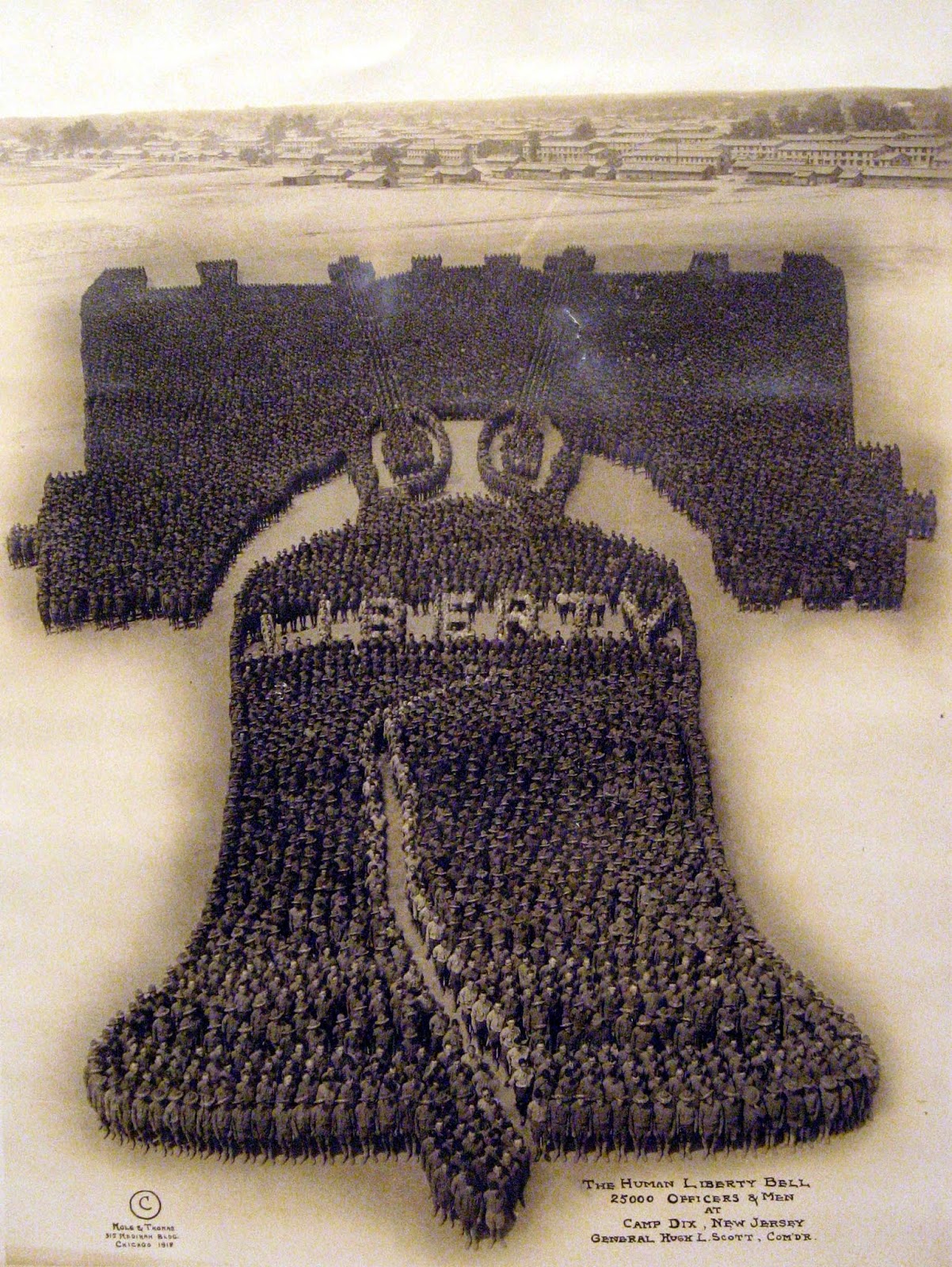
The Human Liberty Bell: 25,000 soldiers at Camp Dix, New Jersey in 1918
This was one of the earliest of the photos. Though it is also fairly simple in configuration, it's very impressive how they managed to do the lettering to make it legible.
Let's look at two more...

The Human American Eagle: 12,500 nurses and soldiers at Camp Gordon, Georgia in 1918
This is perhaps our favorite of the collection because it involved so many nurses as well as soldiers. If you zoom in at the white lines, you'll see a bunch of proud nurses!
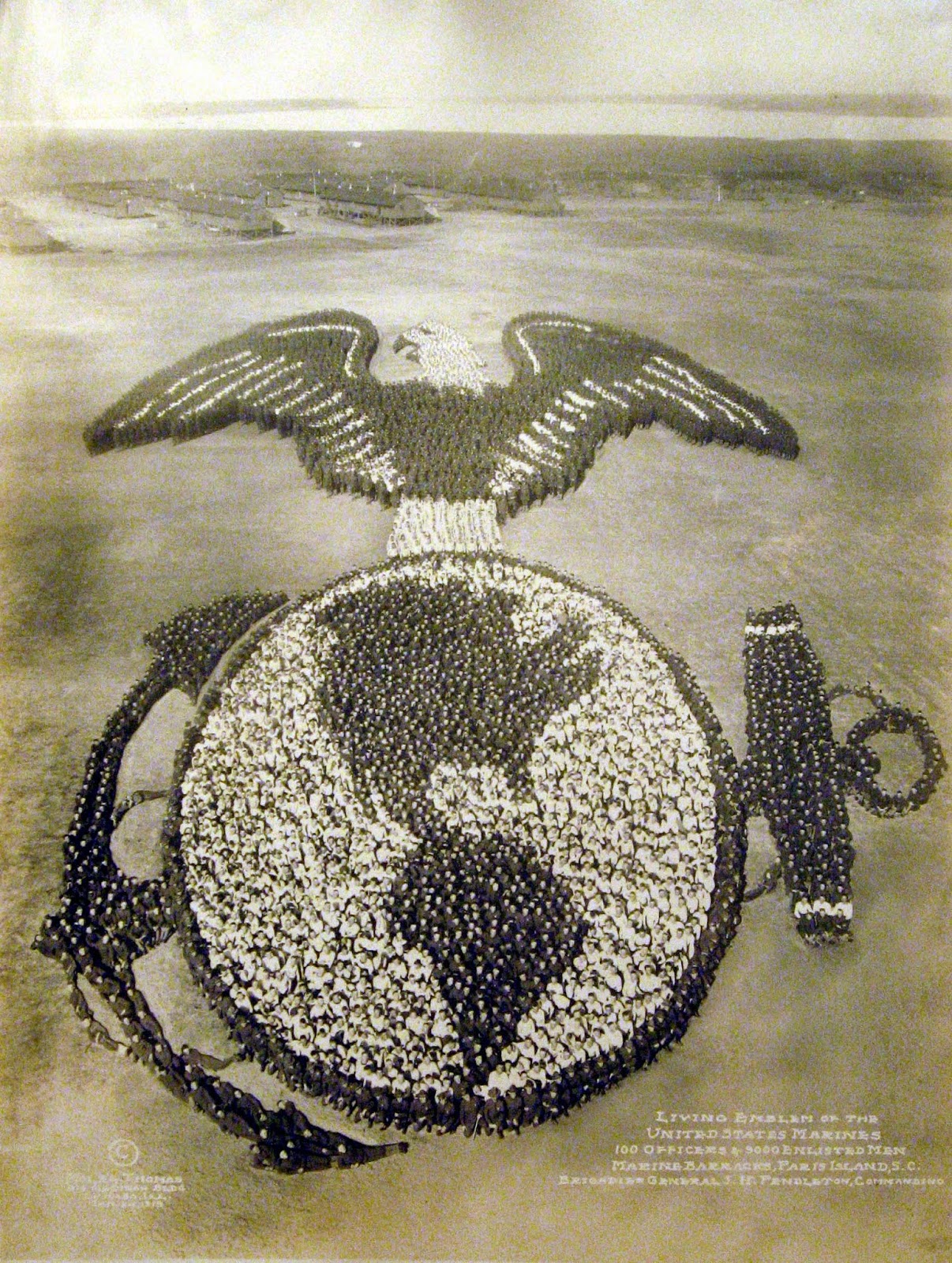
Living Emblem of the United States Marines: 9,000 troops at the Marine Barracks at Parris Island, SC
This last photo from our story shows the emblem of the US Marines from their base in South Carolina. This one posed some interesting problems for the photographers given the fine lines in the logo itself. They also wanted to ensure that none of the ground beneath the "oceans" would be seen. They addressed the first problem by having soldiers wear all black and lie down on the ground to craft the fine lines; the second problem was solved by having many of the soldiers up front crouch down in order to preserve the light/dark differentiation.
If you liked this story, hit the "Share" button to pass it on to friends...
